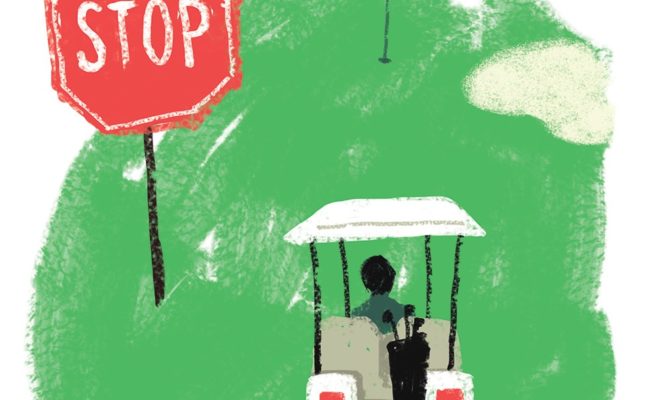While We’re Young…. Please!: In an age of fast, fast, fast, why are we still struggling with slow play?

As a new columnist in this space, I shall begin by using it to write about an old problem. Slow play. Let’s be more emphatic: Stupid, unnecessary, mindless, maddening slow play.
For the 12 handicappers like me, and so many below and above, reading about golf’s slow play is a lot like eating potato chips. You can’t get enough.
Instead of making this just another general rant, let’s go right to some recent reality.
It was a Sunday afternoon at Sierra Lakes GC in Fontana. Nice course, almost always in decent shape and almost always user-friendly. But by the second tee, my friend and fellow golf degenerate, Barry, had started to grind his teeth. In front of us was a twosome, and one of the twosome—we shall call him Mort—couldn’t hit a golf ball if they gave him a two-by-four.
He was awful. Which might be acceptable if he knew that. Apparently, nobody ever told him his swing looked like somebody clearing a field with a machete. The club head never went back the same way, nor certainly came down the same. The first two holes, we kind of felt sorry for him. The next 16, we were just angry.
But through the anger came a fascination. Did Mort not know how bad he was? Was there really any enjoyment in this for him? If he shot 130, it would be a great day, or he cheated. Did he understand he was affecting at least 50 other people?
Or did he have no clue–closer to the likely truth–and was he just another example of a golf course taking a greens fee and turning the other way. It is easy to put it all on Mort’s back, but there seems to be no real attempt at managing this on most public courses. When I complain to friends, the answer is always the same: Join a country club.
But what if you don’t have the money or desire to do that, to play the same course every day, even if you could afford it?
It is understandable that you can’t ask Mort to hit shots on the driving range to see if he qualifies for your course—although I’ve heard worse ideas. But management needs to give its starters and marshals some authority to police things.
Mort played from the back tees. Why are you not surprised?
At least he had a different goal than the rest of us, who are attempting to make pars and minimize double bogeys. Mort was trying to hit it past the ladies’ tee. On this day, the starter took one look at Mort’s swing and rolled his eyes. A marshal came along and told us he realized we were in for a long day.
But they had little authority to act. The customer is always right, even if, in this case, Mort would end up costing the course more customers.
I was at Merion for the U.S. Open in 2013. Before the tournament started, the USGA kicked off a campaign to address slow play. The centerpiece was a play on Rodney Dangerfield in Caddyshack and his plea to a slow golfer to hit it “While Were Young?” It was a decent attempt, but the problem has not gone away.
There are dozens of reasons other than the Morts of the game that have caused golf to slow to a crawl—tee times separated by less than 10 minutes, courses designed by people who had unhappy childhoods (Was Pete Dye beaten by a railroad tie as a youngster?), the pros setting bad examples by analyzing every shot like they are curing cancer. On and on.
But until course managers realize they need to (nicely) take Mort off the course, give him his money back and even buy him lunch, they will continue to lose five or six golfers to their course the next time.
That’s harsh. It’s also good for the game.
Bill Dwyre was the sports editor of the Los Angeles Times for 25 years and a sports columnist there for the last 9½. He has covered all the major golf tournaments and learned nothing that helped his game at any of them.











